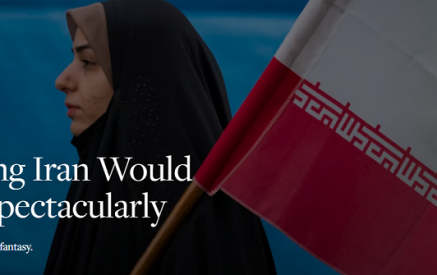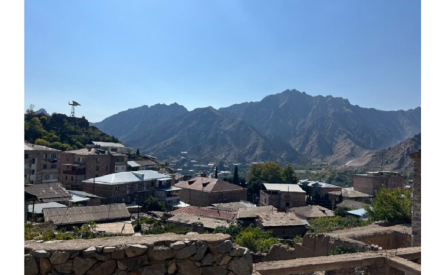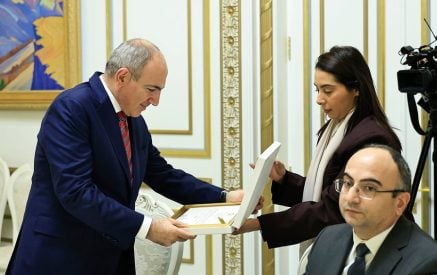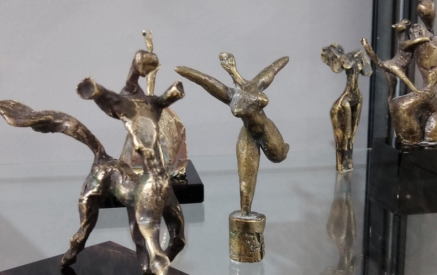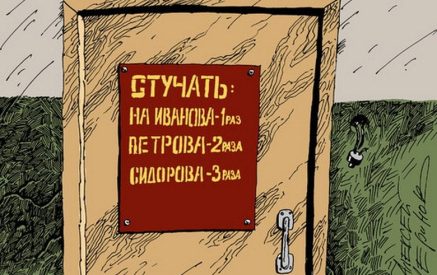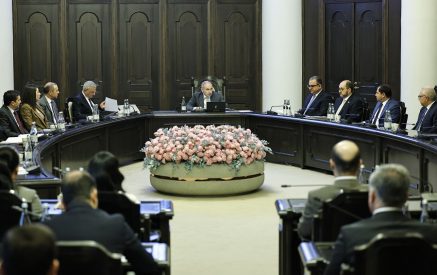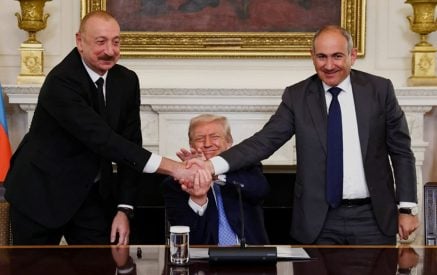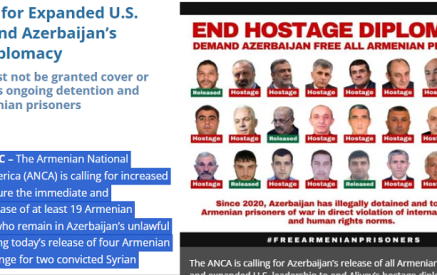American Committee for US-Russia Accord. 15 years ago, Mikheil Saakashvili’s Georgia was widely regarded by geopolitical observers as a textbook example of what you should not do if you were a former Soviet republic. By contrast, Georgia’s southern neighbor, Armenia, under the presidency of geopolitical “chess master” Serzh Sargsyan, exhibited very much the opposite image—that of a small ex-Soviet state successfully balancing between East and West.
Now, however, a decade and a half later, the tables have turned, and the two longstanding Caucasian neighbors have seemingly switched roles. Georgia, under the governance of Bidzina Ivanishvili’s Georgian Dream party, is now widely regarded as a model of pragmatic policy for post-Soviet states. Meanwhile, Armenia under the “revolutionary” Nikol Pashinyan now rivals, or perhaps even surpasses, the hapless Saakashvili in terms of poor foreign policy management. The great irony, of course, is that it was none other than Ivanishvili himself who once publicly highlighted Serzh Sargsyan’s Armenia as an example for Georgia to follow.
So, what happened?
Between East and West
Read also
To better comprehend the geopolitical predicament faced by Armenia and Georgia, it is necessary to first provide some broader historical and geographical context. The two Caucasian republics are located at a pivotal juncture where Eastern Europe, Southern Europe, and the Middle East meet. Both are ancient Orthodox Christian states. Armenia in particular is known for being the first state in history to adopt the Christian faith, an event that most Armenians traditionally date to the year AD 301. Both peoples possess unique alphabets, distinctive architecture styles, and deep affinities with the classical Mediterranean world, to say nothing of the longstanding influences of Russia and Persia.
The geographic contexts of Georgia and Armenia have been both a blessing and a curse. At one point, both countries benefited greatly from their positions, being enriched by economic and cross-cultural exchange along the major trade routes of the great Silk Road. Conversely, being countries at a crossroads has also brought terrible misfortune to Armenia and Georgia. Throughout the centuries, their strategic position was prized by the great powers, be it the Romans (later Byzantines) against the Persians, the Persians against the Ottomans, or the Ottomans against the Russians. Geopolitical intrigues and the fate of geography left these countries vulnerable to civil conflict, fratricide, and ultimately open warfare between the rival powers.
Thus, the current contest for regional influence between Russia and the United States is nothing new for the Georgians or the Armenians. What is new—and quite striking—are the ways in which the responses to this geopolitical rivalry have evolved in Yerevan and Tbilisi over the past two decades.
A Tale of Two Neighbors
Upon ascending to power in the so-called “Rose Revolution” of 2003, the provocatively pro-Western Saakashvili set out to pursue membership in NATO and the EU, while seeking to systemically destroy all ties with Moscow. Rather than cultivating a balanced policy between East and West, the bungling Georgian was absolutely and utterly convinced of American superiority. Naturally, he owed his thinking to the “sage advice” of his pro-war handlers in Washington. Indeed, the encouragement of Saakashvili formed part of the larger drama of US-backed NATO expansion, dating back to America’s broken promises to former Soviet president Mikhail Gorbachev not to expand NATO “once inch” beyond East Germany.
In the end, Saakashvili’s reckless course culminated in the disastrous war of 2008 over South Ossetia, a conflict that official Tbilisi today unambiguously blames on Saakashvili and his cohort, acting on orders from “external forces.” The war concluded with Georgia’s defeat and Moscow’s recognition of both South Ossetia and Abkhazia. And when the smoke cleared over Tskhinvali, the reality quickly set in that the “city on the hill” would not be forthcoming with its NATO cavalry. No amount of saperavi or even chacha could change this reality, regardless of Saakashvili’s continued illusions of impending Western support. Some Georgian officials realized this from the get-go, when amid the war itself, they blamed Washington envoy Matt Bryza for encouraging Saakashvili in the run-up to the war.
The situation in Georgia stood in stark contrast to that of neighboring Armenia. Under Armenian President Serzh Sargsyan, Yerevan pursued a balanced foreign policy approach, striking an equilibrium between the interests of both East and West. Sargsyan, known widely as a “silver fox” and a master geopolitical “chess player,” well understood the leading position of Russia in the Caucasus region. The Armenian President viewed Yerevan’s military alliance with Moscow as vital for the country’s security and, indeed its national survival, a fact enhanced by the memory of the 1915 Armenian Genocide. For that reason, Armenia became the first former Soviet republic in the Caucasus to join the Eurasian Economic Union (EAEU). Relations with Beijing and Tehran were likewise a priority under Sargsyan’s administration.
At the same time, Armenia’s geopolitical realities did not prevent it from engaging in constructive relations with the West, including the European Union and the United States. In this regard, Armenia played the role of a “bridge” between Moscow and Washington, with the Armenian Diaspora in the West acting as unofficial supporters of Yerevan’s geopolitical “balancing act.” Sargsyan and his top diplomat, Edward Nalbandyan, even went so far as to pursue a constructive “football diplomacy” with Turkey, calling the bluff of Ankara which, in the end, rejected Yerevan’s efforts toward Turkish-Armenian normalization. In each case though, Yerevan’s paramount objective was to put Armenian interests first—above all, the security of the people of the Armenian Republic and the Armenians of the self-proclaimed Republic of Nagorno-Karabakh (Artsakh).
Shifting Strategies, Pragmatic Realities
Sargsyan’s pragmatism did not go unnoticed. In Georgia, Saakashvili’s great rival, the Imeretian billionaire Bidzina Ivanishvili was inspired by Sargsyan’s approach to foreign affairs. After soundly defeating the beleaguered Saakashvili in the Georgian parliamentary elections of 2012, Ivanishvili immediately began to reorient Georgian foreign policy toward a pragmatic course. As his reference point, he publicly cited the Sargsyan strategy, which he dubbed the “Armenian way” of geopolitics (Ivanishvili’s foreign policy itself became subsequently known in Georgia and Armenia as Ivanishvili’s “Armenian way”). Georgia has been on this track ever since—repairing relations with Russia and forging strong relations with China and Iran, while keeping the door open to Euro-Atlantic structures. The outcome has worked toward the overall benefit of the Georgian people, underscoring the ways in which the Georgian Dream’s foreign policy is more pro-Georgian than anything else.
Armenia has not been so fortunate. In 2018, Sargsyan, who was in the process of modernizing the Armenian military, was overthrown in a mass uprising instigated and led by opposition activist Nikol Pashinyan, with the backing of Western-supported NGOniks. Armenia’s supposed “Velvet Revolution” did not fundamentally change the socioeconomic realities that Pashinyan had vowed to remedy. Rather, it only reinforced them, in the style of other post-Soviet “color revolutions.” What changed was the republic’s foreign policy orientation. Although Pashinyan and his supporters initially proclaimed that the “revolution” had “no geopolitical context,” provocations and distrust characterized relations with Russia almost from the beginning. These included Pashinyan’s prosecution of political opponents and former officials, including the republic’s former presidents.
Ostensibly, Pashinyan also pursued a “hard line” toward the long-running dispute over Nagorno-Karabakh. However, his “hard line” only served to provoke a larger war with neighboring Azerbaijan in 2020, resulting in numerous deaths, significant territorial losses for the Karabakh Armenians, and a severe weakening of Armenia’s national security. Despite the deployment of Russian peacekeepers to the region, Pashinyan, acting on the advice of Western officials, decided to entirely disavow Nagorno-Karabakh in October 2022, thus paving the way for Baku’s ethnic cleansing of the province in September 2023. However, unlike Saakashvili, Pashinyan does not regard the tragedy of Nagorno-Karabakh as a loss for Armenia. The PM has showed no remorse for his actions, having long viewed the mountainous region and its indigenous population as a “burden.” Disregarding the right of the Karabakh Armenians to self-determination, Pashinyan hoped that “giving away” their homeland would facilitate a speedy resolution of all issues with Azerbaijan and Turkey, thus enabling an Armenian pivot toward the West and NATO.
However, the “resolution” of the Karabakh issue did not result in any “quick peace,” but only larger and more ambitious claims by Baku on Armenian territory, especially on the southern province of Syunik. Despite clinging to power through the heavy use of police force, Pashinyan is increasingly unpopular with the overwhelming majority of Armenians and now faces periodic protests against his rule. Moreover, Russian President Vladimir Putin’s most recent statements, including on the Karabakh question, reveal that Moscow has absolutely no intention of leaving Transcaucasia. In all respects, Armenia remains deeply integrated in the EAEU, especially economically.
So, who today among the Caucasian republics pursues the most pragmatic policy toward Russia? It is most certainly not Pashinyan’s Armenia. Ilham Aliyev’s Azerbaijan likes to uphold itself as a “bastion of pragmatism,” successfully balancing between East and West. However, Baku’s longstanding proximity to Western big oil, Israel, and the US military-industrial complex, as well as their respective lobbies in Washington, belie the claims of the “Kuwait of the Caspian.”
It is therefore Georgia that today takes the first place among the Caucasian countries as the most balanced and the most pragmatic. Placing the independent interests of the Georgian people above all else, Tbilisi has successfully managed to maintain a delicate equilibrium among the rival geopolitical actors. Now, with rumbles of Saakashvili and company plotting a “revolutionary comeback,” one can only hope that Georgia will be able to keep its balance and even inspire Armenia to return to its earlier pragmatism under a new leadership. Indeed, in today’s multipolar reality, the “Armenian way,” which one may rightfully re-dub the “Ivanishvili way,” appears more relevant than ever.
Pietro A. Shakarian, PhD is a historian of Russia and the Soviet Union and a postdoctoral fellow at the Centre for Historical Research at the National Research University–Higher School of Economics in St. Petersburg, Russia.
Pietro Shakarian








